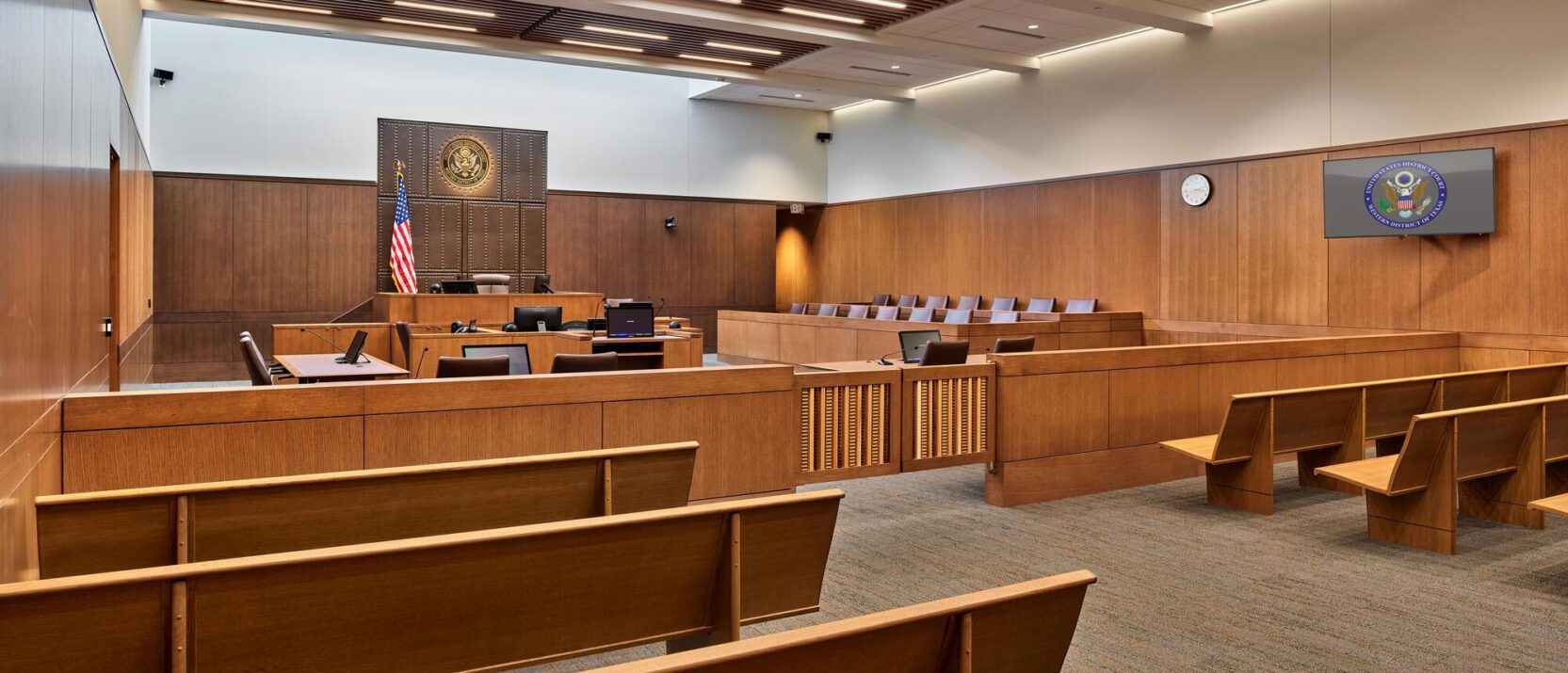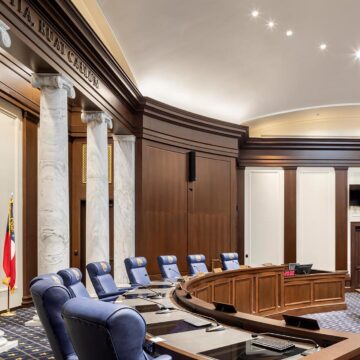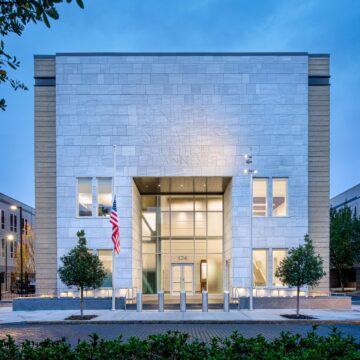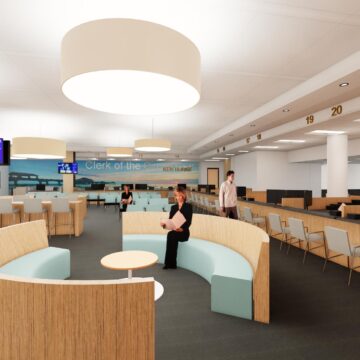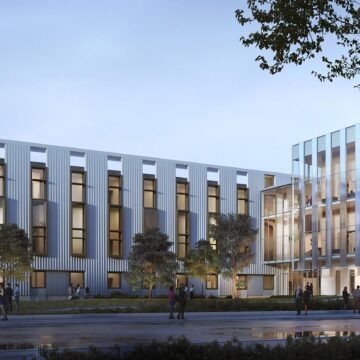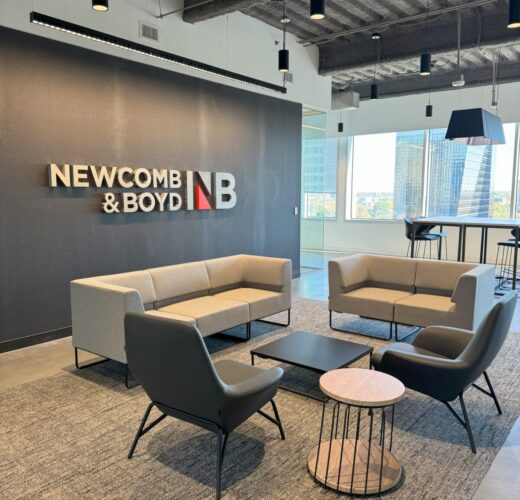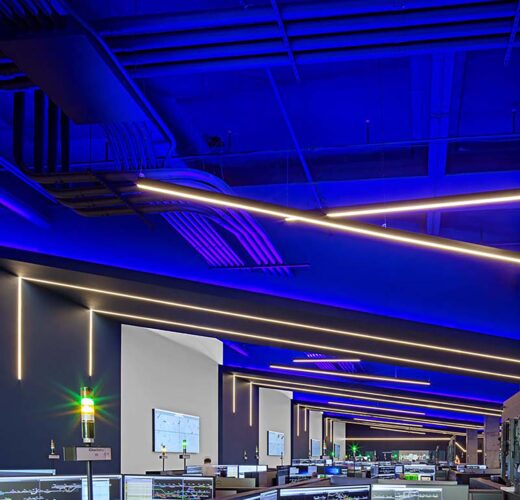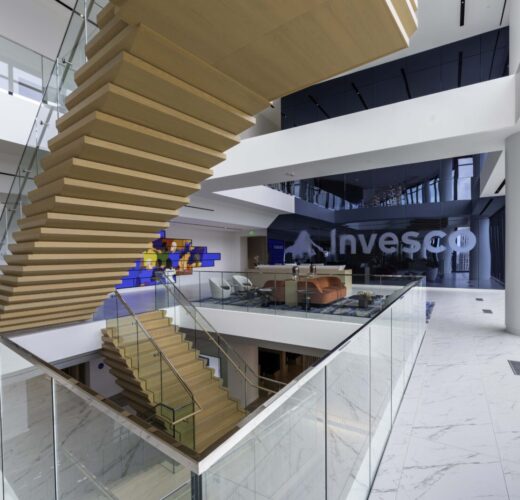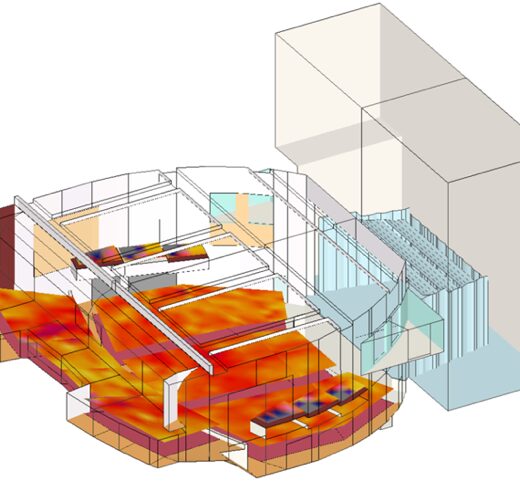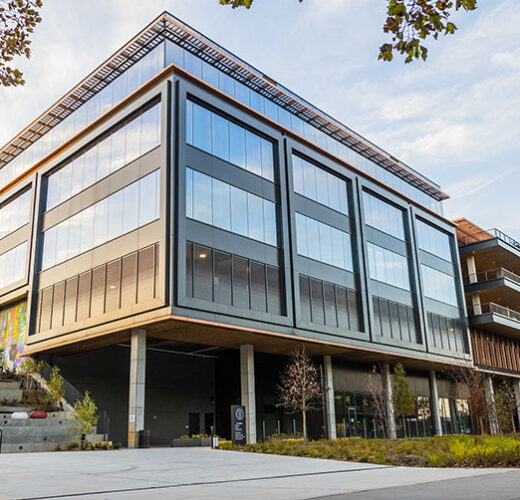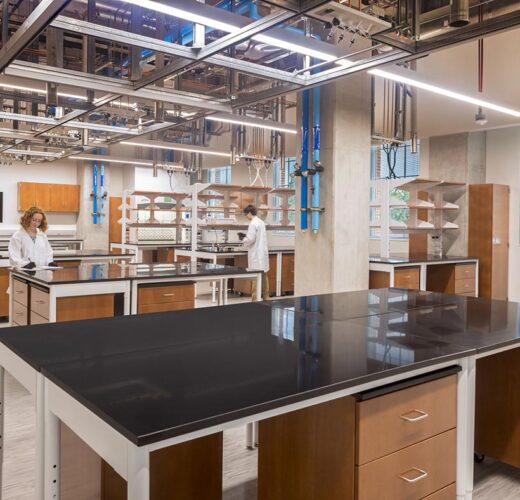Integrating our engineering and consulting services across markets
We combine efficiency, technology, and artistry to shape skylines and build a better future.
San Antonio United States Courthouse Court Technology
Court technology systems for the San Antonio United States Courthouse. Pursuing LEED Gold
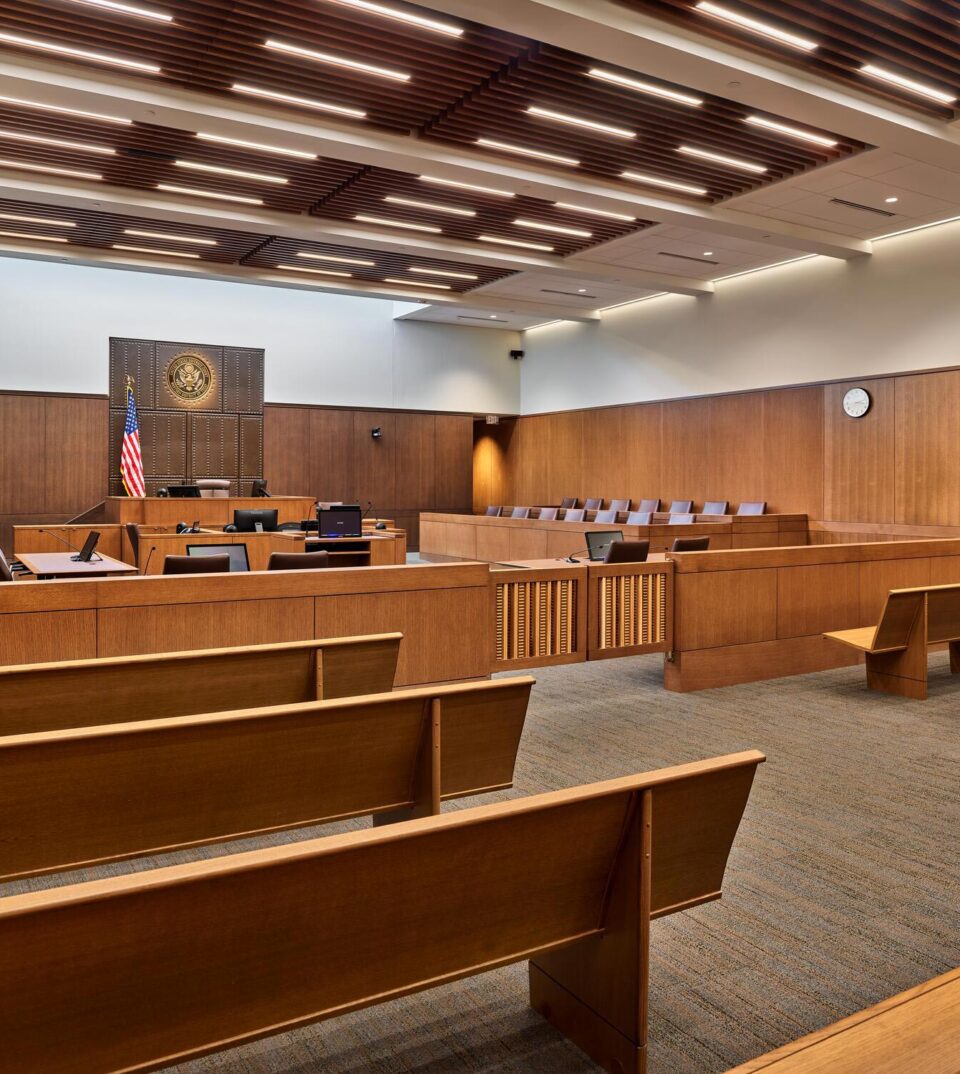
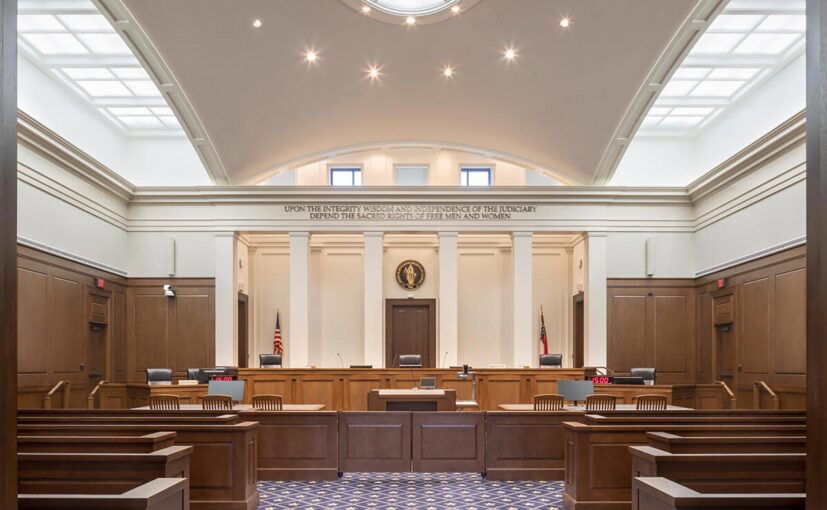
Court technology systems can streamline courtroom proceedings, minimizing case time and maximizing efficiency. We design judicial facility systems with reliability, resilience, expandability, and ease of use and maintenance in mind.
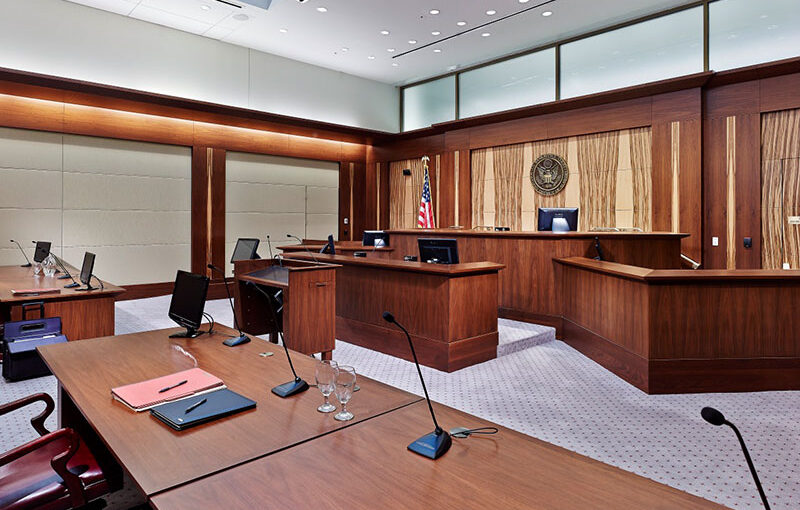
The Newcomb & Boyd difference
The modern courtroom serves not only as a venue for public discourse but also as a sophisticated recording studio, reflecting the evolving needs of the legal landscape. Sound quality is crucial, requiring clear speech and confidentiality. Modern audio systems must support assistive listening, language translation, electronic court reporting, and video conferencing. Security components, like X-ray inspection, metal detectors, cameras, intercoms, and card readers, must reduce potential danger and blend into the architectural design. Our Court Technology are experts who have helped shape industry standards, contributing to the U.S. Courts Design Guide and U.S. Courts Best Practices Guide. They understand the complexities involved in seamlessly integrating security, audio-visual, and acoustical elements to enhance courtroom functionality.
View court technology projects
San Antonio United States Courthouse Court Technology
Court technology systems for the San Antonio United States Courthouse. Pursuing LEED Gold
Contact us
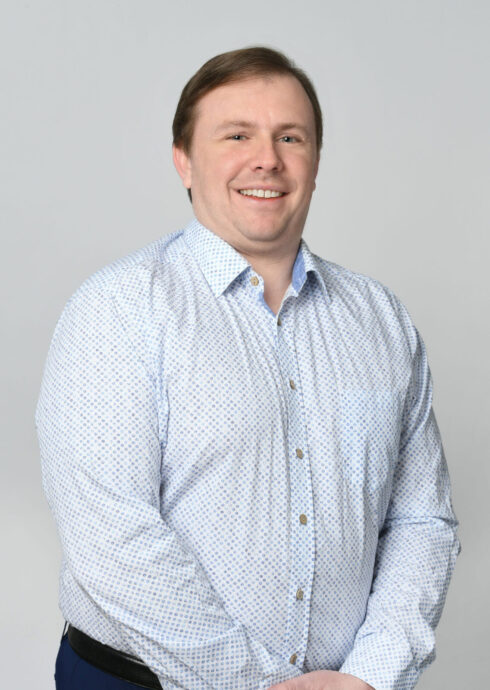
Josef Henschen, CTS-D, CTS-I
Associate Principal
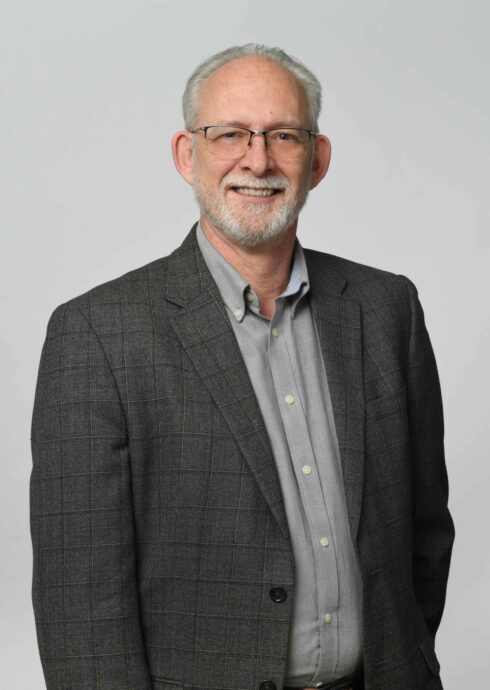
Kris Kuipers, CTS-D, CTS-I
Associate Principal
What we’re working on
Check out the latest cutting-edge techniques we use every day to bring our projects to life.
